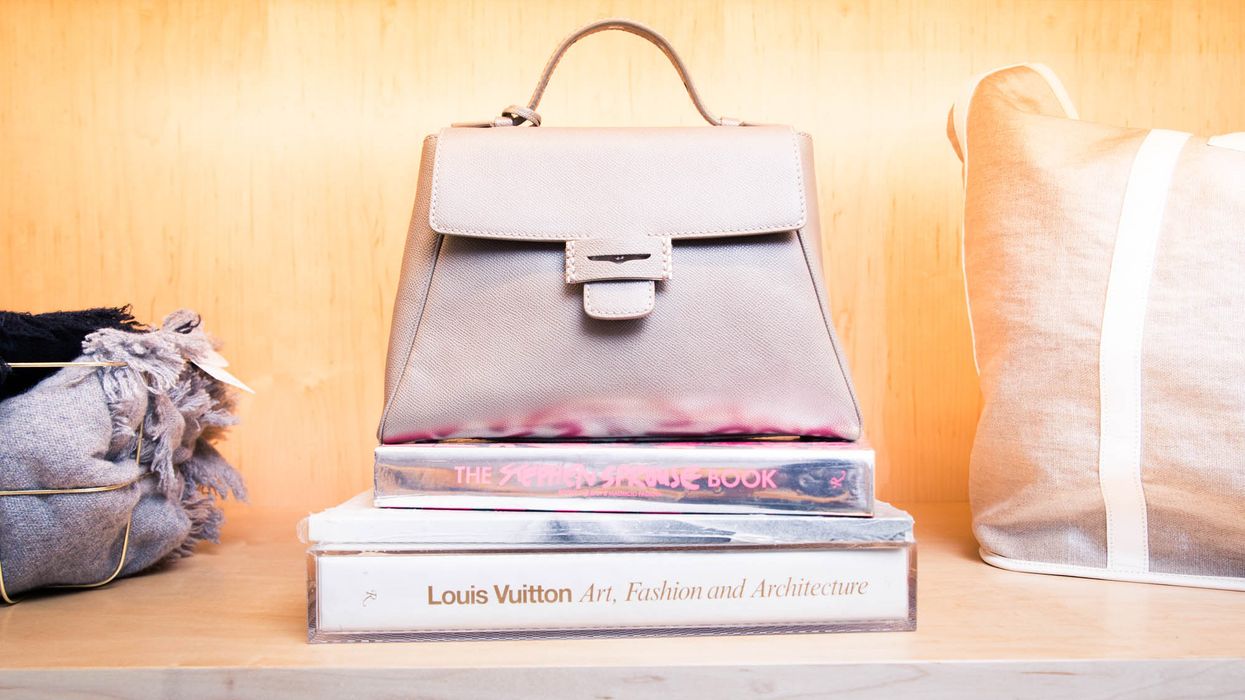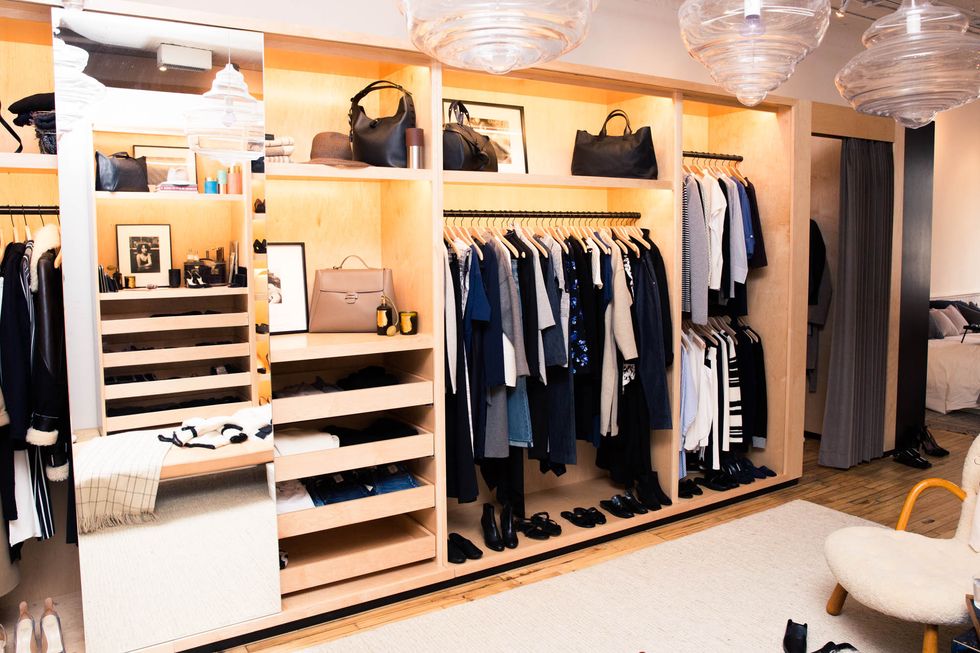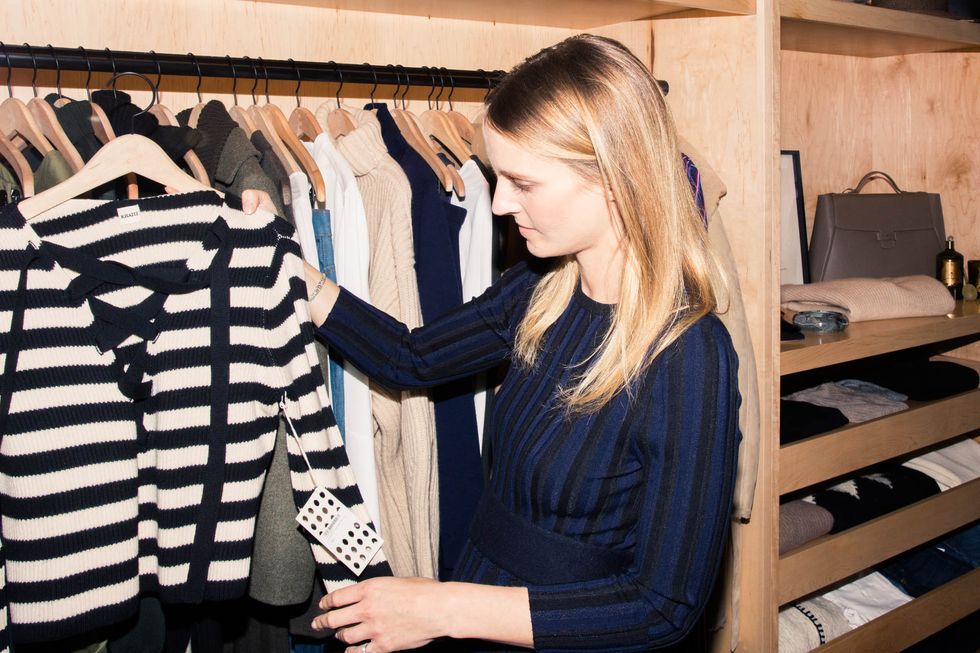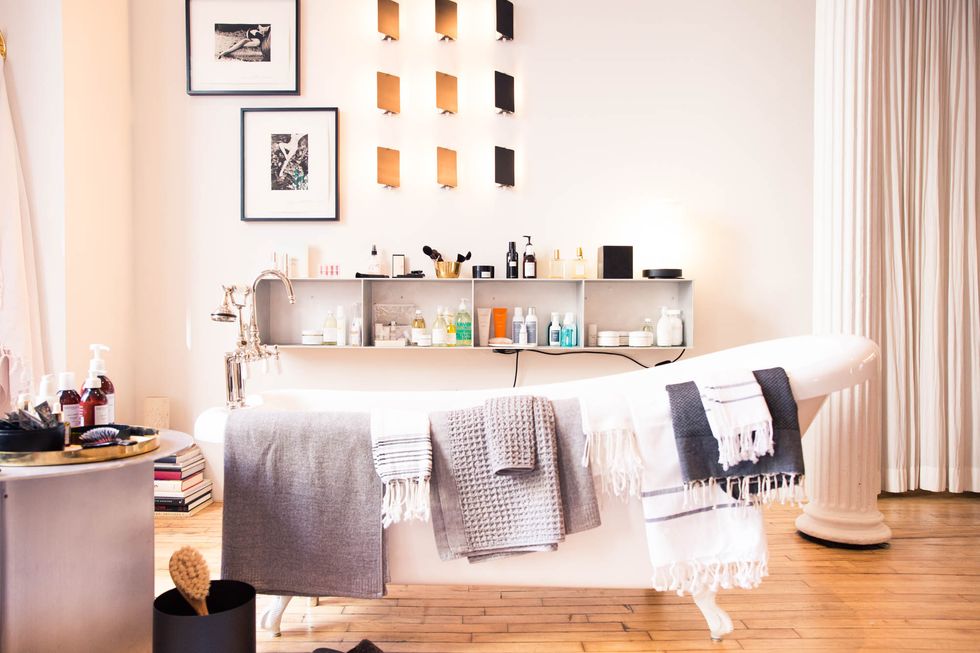How Vanessa Traina Is Doing Two of Fashion’s Biggest Jobs at Once
For her, there are 30 hours in a day.

Three years ago this week, Vanessa Traina launched The Line and subsequently made it much easier for us plebs to actually figure out how to outfit our lives exactly like she does. You see, Traina has to be one of the chicest woman in fashion (one of very few that can be described with that word without even a hint of irony), and while she’s long been a close collaborator of Joseph Altuzarra and Alexander Wang’s, The Line, and it’s parent company Assembled Brands (which also owns Protagonist, Khaite and Tenfold) is her big game-changing project—especially since she’s in the role of executive creative director of the whole thing and oversees each of the brands in the company’s stable. Talking to Traina about what The Line is—“fundamentals” in her words—and the other Assembled Brands, and then walking through the space with her, you really start to understand her vision, and why their retail model and design feels special and innovative. All this, and still she manages to style a couple major runway shows and work one-on-one with her buyers and creative directors. Here’s how Traina is making it all happen.
The realization that lead to The Line:
“The idea was always to create a high touch retail experience, but have it be service-based. We set out to create a lifestyle brand and put product in a novel setting.
“We were responding to the over assortment in the marketplace. Every major department store and e-commerce site was tapping into trends of the season and the point of view had been slightly diluted. We really wanted to create a very specific point of view, and we launched with a smaller assortment to really drag that home. We noticed a trend in shoppers really investing in pieces that would carry them from season to season. That's really where we started—the fundamentals of everyday living: your wardrobe, your kitchen, your living room.
“There's just so much product available in the market that there is this friction in the search. We want to eliminate that friction and eliminate the search, and have the best edit. I describe The Line as the fundamental building blocks of your home and wardrobe.”

The brick-and-mortar versus e-commerce debate:
“It was always important for us to have a physical location. Initially we considered being a showroom, but realized based on customer experience how important it is for people to have that physical, in-person retail experience. Both the stores and the website are really there to tell the story. The store presents all of our product in context—everything is in its place—and the website tells a different kind of story—we interview the designers, we show the products through different editorials every week. The Line is all about storytelling and placing everything in the right context.”
Why The Line’s parent company, Assembled Brands, is her real baby:
“Assembled Brands always existed in the parent company. Protagonist and The Line launched in tandem—actually, the initial fashion assortment at The Line was created to support Protagonist. Assembled Brands basically provides shared resources across the entire group: creative direction, product development—and acts an incubator for our brands.”
How their newest brand, Khaite, came to be:
“We knew we wanted to go further into ready-to-wear from a different perspective than Protagonist, and the creative director, Catherine Holstein, is a very old friend of mine. She had an idea and noticed a gap in the marketplace, and we started developing from the ground up with Assembled Brands.”
When it really means to be Executive Creative Director of Assembled Brands:
“I'm the creative director of the group so I work across all brands with all creative directors. I oversee the buy for The Line. I work on development with Protagonist and Khaite. I manage creative across the board. They're all separate companies under Assembled Brands. But there are definitely areas where they support each other. Shared resources is really where we're making the biggest investments.”

Why making classic fashion (rather than trend-driven) is part of the business plan:
“I work with and have worked with a lot of designers that are more experimental, that are more whimsical and are constantly trying to find what's new every season. You always need newness, but as a woman and as a customer, at the end of the day, I want clothes that I can actually wear, that aren't going feel tired in three months and that will easily wear with things that already exist in my wardrobe. I don't buy a whole new wardrobe every season—I have a few new items that I love and that I know I will wear for years.”
How she still manages to work as a stylist despite her more than full-time role with Assembled Brands:
“I don't know, it just happens. Unlike most people there are 30 hours in my day. I just find the time. If you want to be working on something or involved, you find the time and you make it work. I have different relationships with all of my clients and creative directors—of course I don't do as much outside of the company as I used to, but I still work with Altuzarra and I do special projects and collaborations that are important to me.”
What goes into styling a runway show:
“It's an incredible process. Most of the designers that I work with on runway styling, I also work with on creative consulting, so I'm already familiar with the collection. Styling the show is a week long process. You start with looks and casting. Some collections I work on, the designers really design the look. Other collections, it's a showroom full of pieces and it's like a puzzle that you have to figure out—you try the same top with twenty skirts and twenty different pants in the showroom, with every different style and color of shoe, before you figure out how it works best. It's a team of creatives that come together—at a certain point you have the hair and makeup test, the music test; everyone comes in and out. You're strengthening the message and inspiration for the collection throughout the process. I imagine it's like giving birth. Suddenly it's 11 minutes and it's done [laughs]—then you’ve put it out into the world.
“Sometimes you're in fittings ‘til the wee hours of the morning, the day of the show. I've worked in houses where they're sewing for more than 24 hours and running a last minute piece to the show venue. It really is an incredible experience and it's completely different every season—you can never predict how difficult or smooth it will be.
“I love doing it. It's really incredible being involved in creating that look of the season because there are so many ways a collection could go, if you did the hair and makeup differently, it could go from a twenties collection to an eighties collection. Having a hand in creative processes is very special.”

What an average “30-hour-day” looks like:
“I get up quite early—I'm usually up by 6:30 AM. Tea and emails are the first thing that happen in the morning. I do Ballet Beautiful every morning and then come into the office. I'm constantly out of the office, too—either it's market season and I’m out with my buyers or I have to leave the office for meetings—but this is my home base day-to-day. I try to go home before seven, but I hate leaving unread emails so I usually respond to emails all night. I have to go home at seven to walk my dog. Most nights I'll cook dinner at home.”